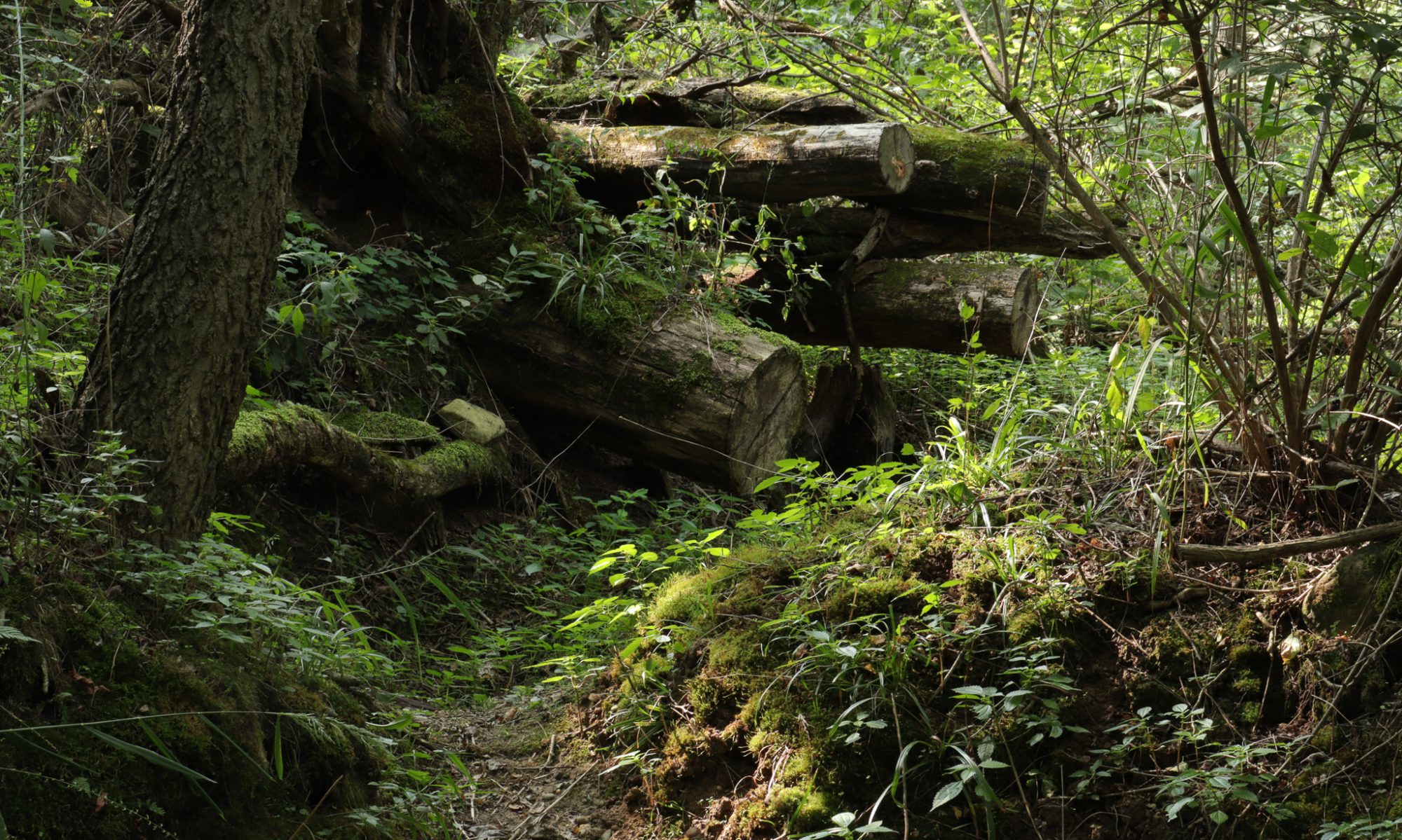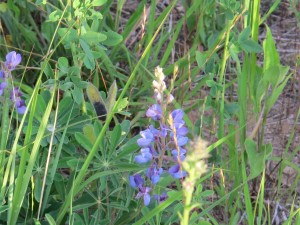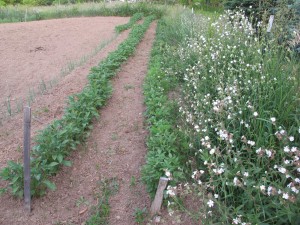In 2011 when we heard of the pipeline expansion/replacement planned by Enbridge Corporation across The Hermitage land, we did not foresee what this incursion would bring to our attention and how we would respond. Looking back on the past four years, we have been radically changed in how we see the land and in how we live on it. We began to respond by holding a Service of Lament on the Pipeline on Holy Saturday 2012. The vision to make a difference in the way we think about and use energy at The Hermitage grew out of that Lament. We decided to rename the pipeline ”the prairie” symbolizing our hope that this land will not always be used to transport oil and gas, but, someday it will simply be a natural ecosystem. After the pipeline construction was complete, we planted prairie grasses and wildflowers to solidify our commitment to this vision.
Next, we cleared and created a prayer garden on the North side of the prairie. This garden is dedicated in memory of Gertrude Ann Ruder, Naomi Wenger’s mother, whose daily prayers and concern for people we remember in this place. A second prayer garden was created in 2015 on the South side of the pipeline, completing the original plan to have prayers that counter the flow of petroleum under the earth. The two gardens are gentle oases along our woodland paths and places from which to view the prairie wildlife as we breathe out prayers for the earth and for the people who use and abuse it.
The pipeline project also required the relocation of the prayer labyrinth. The new labyrinth, a Triple-Spiral design, was completed and dedicated in August 2015. This labyrinth also holds the hopes and prayers that our continual journey on Earth will be in harmony with the energetic dance of the Trinitarian God of our faith. We commit our lives to discerning that Divine Energy and joining the dance.
In that same year, we replaced the ageing propane furnaces in The Barn with a geothermal heating and cooling system. We also sealed the gaps in the Barn that an energy audit revealed were places we were losing heat. We are now using less carbon energy to heat the building by capturing heat from the earth and keeping it in the building. We also hope, one day, to produce our own electricity from solar panels so we reduce even more our dependence on non-renewable fuel (the fuel used by the electric utility to provide electricity) to heat our buildings and water.
Eating locally sourced food is another way we reduce the amount of carbon-based fuel we use in daily life. The closest source is our own developing garden space. We happily harvested and cooked many vegetables from the garden this summer and fall. We hope to continue to expand what we produce here in the coming years. We continue to ask questions about serving food that originates in or only grows in far away places. Is there a local source for these foods? Do we consider those foods the luxury they are or do we take them for granted? How often can we justify luxury eating?
We continue to ponder the many ways we can reduce our dependence on fossil fuels even as the natural gas from Canadian gas wells and diluted bitumen from the tar sands of Alberta hum merrily through pipes under the soil we walk over each day. Our small protest continues and may one day be a gateway to robust living for all of the Earth, God’s good creation.


